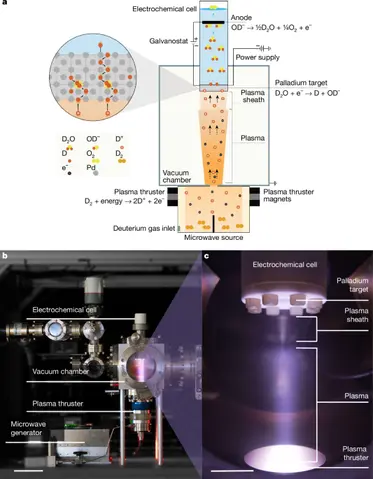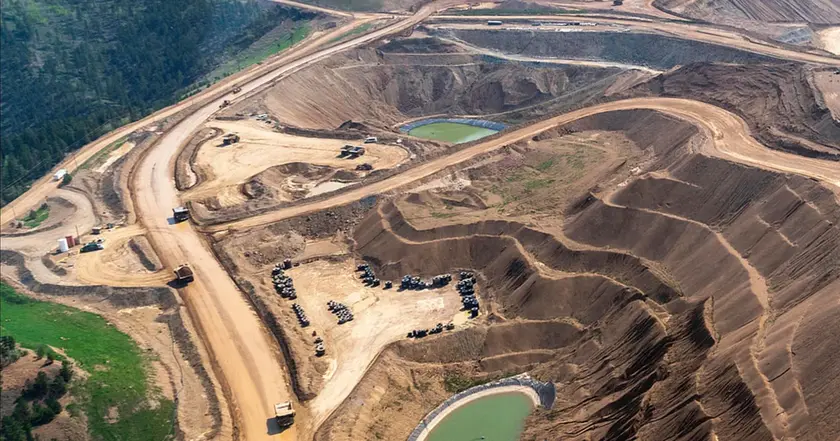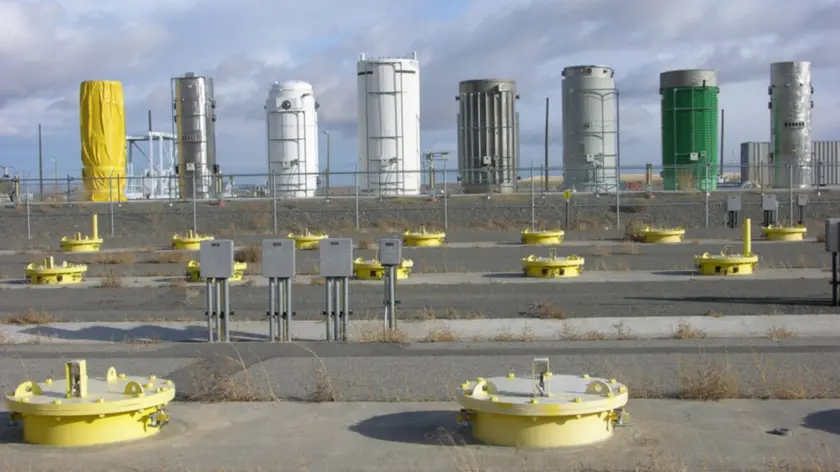T4K3.news
Benchtop fusion claim draws science interest
A compact reactor reports a 15% boost in fusion rates with electrochemical loading of palladium by deuterium; independent verification needed.

A benchtop fusion experiment reports a measurable rise in fusion rates when palladium is electrochemically loaded with deuterium.
Electrochemical loading boosts deuterium fusion in palladium target
Researchers describe the Thunderbird Reactor, a compact setup that combines a plasma thruster with a custom electrochemical cell to bombard an annealed palladium target with deuterium ions. The system operates under high vacuum and uses a plasma sheath created by a high negative voltage to accelerate ions into the target, where fusion events are measured by neutron counts.
In beam loading runs, neutron production stabilizes after about 30 minutes. In electrochemically enhanced runs, the cell runs at 200 mA for roughly an hour, loading the palladium to form a beta Pd phase with a high hydrogen deuterium ratio. The team reports a 15(2)% increase in deuterium–deuterium fusion rates under these conditions. Experiments used 17 g of 2 M K2CO3 in D2O as electrolyte, a 0.5 mA plasma current, and a target voltage of −30 kV. XRD analyses show the palladium lattice shifts from alpha Pd to beta Pd during loading and revert after annealing at 400 C, indicating reversible deuterium uptake and release.
Key Takeaways
"In situ XRD spectra clearly showed the transition from alpha Pd to beta Pd phase during the electrochemical loading."
Observation of phase change during loading.
"The electrochemical loading of more than 30 min yielded a single beta Pd phase."
Phase composition after loading.
"Replication by independent groups is the crucial test for these claims."
Editorial note on verification.
"This bench scale work could spark renewed debate about low energy nuclear reactions."
Editorial takeaway.
The claim hinges on a long debated area linked to low energy nuclear reactions. Independent replication will be the ultimate test, given the field’s history of controversial results and the need for careful measurement of background signals. If the effect is real, it would prompt a closer look at how electrochemistry interfaces with nuclear processes and what safeguards are needed for devices that operate with high voltages and neutron production. Even then, the result is far from a practical energy breakthrough; verification, error analysis, and peer review are essential steps before any broader claims can follow.
Highlights
- In situ XRD shows the transition from alpha Pd to beta Pd during loading
- The beta Pd phase persisted for 18 hours under different conditions
- Replication by independent groups is the crucial test for these claims
- A bench scale reactor could spark renewed debate about low energy nuclear reactions
Nuclear fusion claims raise safety and public reaction concerns
The study describes high voltage plasma and neutron production at bench scale. Given the history of controversial LENR claims, independent replication and rigorous safety reviews are essential to address public and regulatory concerns.
Further tests by independent laboratories will be the true test of these ideas.
Enjoyed this? Let your friends know!
Related News

Sugar claims face expert scrutiny

Tottenham starts season under Frank after Gibbs White near miss

Body quirks draw online attention

Gobekli Tepe fuels conspiracy theories

Black Hills mining plans draw scrutiny

FDA panels under Makary raise alarms about independence and bias

Brown study on wine and cancer risk

Over £105 million in Premium Bond prizes remains unclaimed
